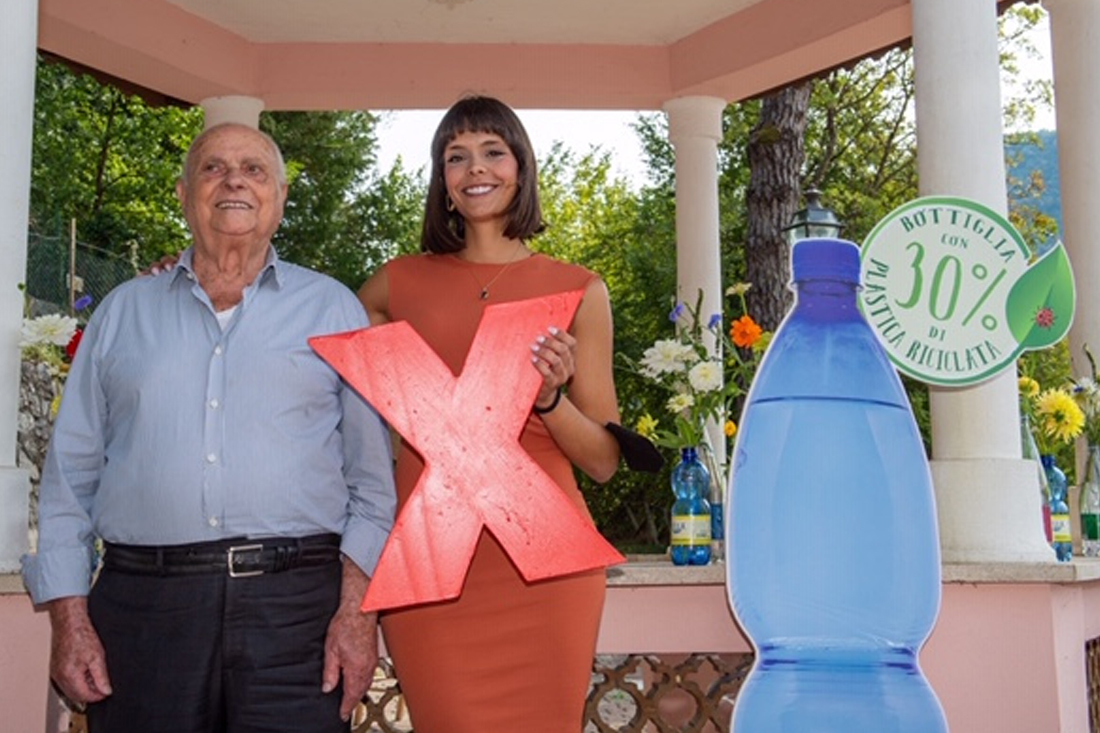Leggi in italiano
Distributing water after a calamity is a gesture of hope; sipping it, the only relief for those who have just been through a drama. Like an earthquake. Matilda Eloisa, 24, is the protagonist of September’s CNA Storie. She remembers those moments well, when the Red Cross and Civil Protection asked for reinforcements to help the populations struck by the Amatrice earthquake. The water that provided refreshment then was that of the Antiche Fonti di Cottorella. It flows in the Rieti area, from Monte Belvedere, in the Valle Santa: one of the most important water basins in Europe. It is distributed in central Italy, in Abruzzo, Umbria, Lazio and southern Tuscany. Last year the company, which has 18 employees, finished up with 2.2 million euros in turnover and 13 million products. Cottorella is a historic company in Rieti, founded in ’68 thanks to an ante litteram crowdfunding: the backers then were some of the noble families of Rieti. The waters of the spa are linked to the prevention of renal and metabolic pathologies. It is also very alkaline and prevents the formation of lactic acid, which is why it is suitable for sportsmen and athletes.
At the end of the 1980s, the father Giuseppe Pitorri, who is now 84, the majority shareholder and holds an honorary representative role, entered the company with an increase in capital. Matilda Eloisa was not even voting age when she began to frequent the factory. At 17, she was already beginning to be interested in the aspects of marketing and branding; the concept of “beauty” in general, which she would soon be studying at university. Matilda Eloisa therefore starts from communicating the product and then approaches the commercial side. Since February 2020 she has been president of the company, in a world, that of beverages, which she defines as “very macho”. “I got into gear, finding my own way of dealing with it and now I feel at ease in this world. Water has always been my favourite element. As a child I was a fish! Water is life, and I consider myself very lucky. We collect it as it flows from the mountain, which is here: by law, the bottling plants cannot be more than two kilometres away from the intake structure.”
Was the company you knew as a child different to that of today?
These years have been an obstacle course. The building permit for an increase in volume was vital, but it dates back to just five years ago. We needed more storage space, to expand the warehouses and be able to diversify our market, expanding it to new types of customers. The expansion allowed us to distribute our water to a network of hospitals in Lazio, while recently we opened up to two channels that we hadn’t dealt with before: vending machines and collective catering.
What type of market are you thinking of for the near future?
In the short term, we plan to increase production by 8% this year, but we will have to deal with a three-digit increase in the price of raw materials and energy bills. In the future we would like to invest in glass, to open up to the world of hospitality and hotels. And in the future, I plan to relaunch the spa area, which is our responsibility and of great value: our production plant is crossed by the Via Francigena and Via di Francesco and we have two structures in the park.
How do your principles of sustainability fit in with plastic manufacturing?
I strongly believe in the circular economy, which is why I had a mystical crisis! Result: we are ahead of the European norms: since last year all of our bottles are made of 30% recycled plastic, and by next year the goal is to increase that percentage from 30 to 50%.
Our bottles are made of 30% recycled plastic, and by next year the goal is to increase that percentage from 30 to 50%.
Is the upcoming investment in glass in the production lines also going in this direction?
Paradoxically, the treatment of the glass has a greater environmental impact than plastic: because glass is treated with soda, which then has to be dumped. Naturally, the comparison has be made with recycled plastic, which isn’t used much because it costs 35% more than virgin plastic. It’s this above all that we’re focusing on.
What’s your relationship with the surrounding area?
We are partners in the most important sports activities. We even play a very particular role in the local derby: in fact, we sponsor both the Serie B basketball teams in Rieti! Ours is a historic company, deeply rooted in the area and in recent years we have seen a strong, active presence of CNA in the area. It’s an association that makes significant efforts, also in its relations with the institutions, and has been shown to follow the companies in all those aspects that an association should be carrying forward.
By 2030 the entire plant will be zero impact.
What will be the factory of the Antiche Fonti di Cottorella be like in 2030?
We’ve installed photovoltaic panels to power our production lines. We’ll be increasing them in the next few years. And by 2030 the entire plant will be zero impact.
a cura di Paola Toscani







